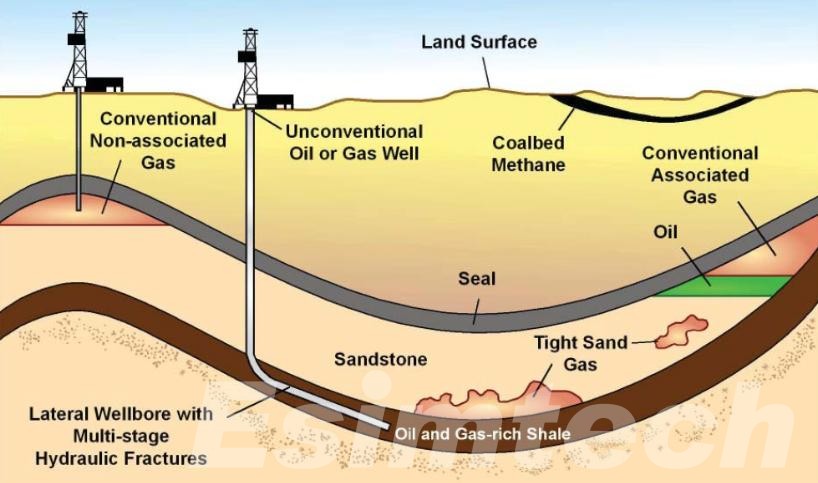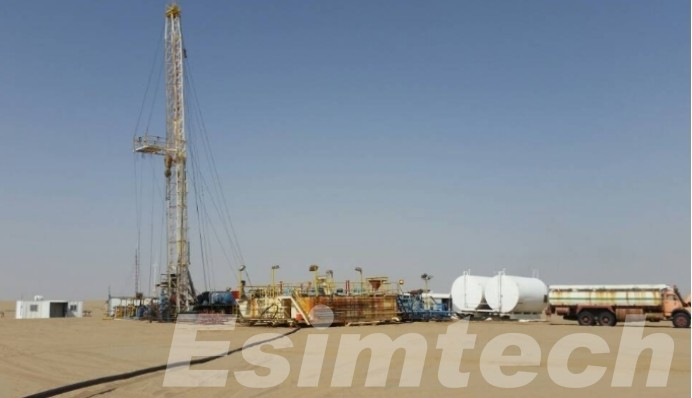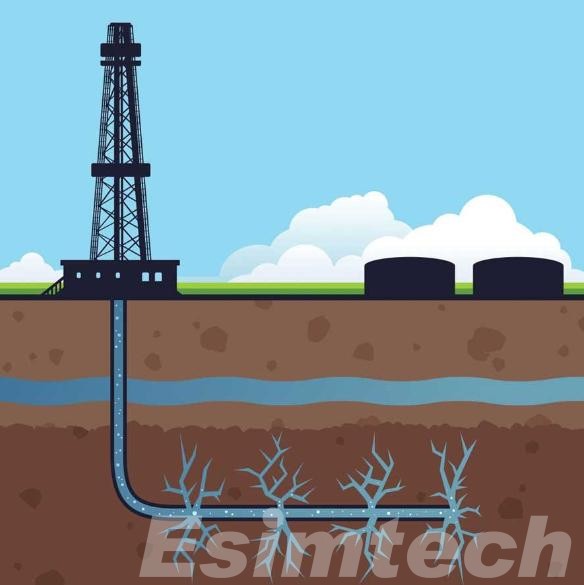Optimizing Well Workover Strategies for Shale Gas and Tight Oil Wells
Shale gas and tight oil reservoirs have revolutionized the energy landscape. However, these unconventional resources present unique challenges when it comes to well maintenance and production optimization. Traditional well workover strategies often need to be adapted to maximize recovery and economic viability in these formations.
Unique Challenges of Shale and Tight Oil Wells

Shale gas and tight oil reservoirs have revolutionized the energy landscape, offering a vast resource base to meet global energy demands. However, these unconventional resources present significant challenges compared to conventional oil and gas wells. Their unique geological characteristics necessitate specialized well workover strategies to maintain production and economic viability.
- Low Permeability: Unlike conventional reservoirs with interconnected pores that allow hydrocarbons to flow readily, shale and tight oil formations have extremely low permeability. This means the rock matrix itself traps oil and gas, hindering natural flow to the wellbore. Hydraulic fracturing, a process that injects fluid at high pressure to create cracks in the rock, is essential for unlocking these resources. However, these fractures can close over time due to formation pressure or residual fluids, leading to production decline.
- Rapid Production Decline: Shale and tight oil wells experience a much steeper decline in production compared to conventional wells. This rapid drop necessitates well workover interventions at a much higher frequency to maintain economic production levels. Traditional well lifespans measured in decades can be drastically reduced to a few years in shale and tight oil formations.
- Formation Damage: The very process used to stimulate production in these formations – hydraulic fracturing – can also be a source of wellbore damage. The fracturing fluid itself, along with particulates from the formation, can clog pores and restrict hydrocarbon flow. Additionally, the fracturing process can damage the wellbore itself, compromising its integrity and potentially leading to fluid leaks.
- Artificial Lift Dependence: Due to the low permeability of these formations, natural reservoir pressure is often insufficient to bring hydrocarbons to the surface efficiently. Artificial lift systems, such as rod pumps or gas lift, become crucial for production. However, these systems require ongoing maintenance and are susceptible to malfunctions. Well workovers are often necessary to repair or replace malfunctioning artificial lift equipment to maintain production.
- Data Uncertainty: The complex geology of shale and tight oil formations makes it challenging to accurately characterize the reservoir. Traditional well logging techniques may not provide a clear picture of the entire reservoir due to the heterogeneity of the rock. This uncertainty makes it difficult to predict well performance and optimize workover strategies.
These unique challenges necessitate a more targeted and data-driven approach to well workovers in shale and tight oil formations.

Key Considerations in Well Workover Operations
Optimizing well workover strategies for shale and tight oil wells requires a meticulous and data-driven approach that considers several key factors beyond just the wellbore itself. Here’s a deeper look at these crucial considerations:
- Reservoir Characterization: A comprehensive understanding of the reservoir’s geology is paramount. This includes analyzing factors like rock formations, presence of natural fractures, and the distribution of hydrocarbons within the reservoir. Additionally, understanding the pressure profile and fluid properties (viscosity, composition) is essential. This data guides the selection of the most suitable workover technique, such as using specific fracturing fluids or choosing the optimal size and type of perforating charges for stimulation.
- Production History Analysis: Historical wellbore data is a goldmine of information for well workover planning. Analyzing this data, which includes production rates, bottom-hole pressure measurements, and fluid properties over time, can help identify the root cause of production decline. For instance, a sharp drop in production rate coupled with a decline in bottom-hole pressure might indicate formation damage near the wellbore. Conversely, a rise in water production could suggest a problem with the zonal isolation (preventing water from entering the wellbore from unwanted zones). Analyzing trends in these metrics helps pinpoint the specific challenge and tailor the workover strategy accordingly.
- Workover Technique Selection: Based on the reservoir characterization and production history analysis, the most appropriate workover technique can be chosen. Some common techniques employed in shale and tight oil wells include:
- Stimulation: Techniques like hydraulic fracturing, acidizing, and nitrogen lifting can enhance wellbore connectivity and improve hydrocarbon flow from the formation.
- Cleaning: Removing scale, debris, and formation damage near the wellbore can significantly improve productivity.
- Downhole Repairs: Repairing or replacing malfunctioning artificial lift equipment (like gas lift or rod pumps) is crucial for maintaining production.
- Sidetracking: In some cases, drilling a new wellbore section (sidetrack) can bypass damaged zones or access additional hydrocarbon-rich areas within the reservoir.
- Advanced Technologies: Utilizing cutting-edge technologies can significantly improve the efficiency and effectiveness of well workover operations.
- Coiled tubing: This continuous, flexible pipe allows for continuous deployment of tools and fluids downhole, minimizing rig time and environmental footprint.
- Downhole cameras: These cameras provide real-time visuals of the wellbore condition, aiding in diagnosing problems and guiding interventions.
- Data analysis software: Advanced software can analyze vast amounts of wellbore data, helping optimize workover design and predict potential outcomes.
By carefully considering these key factors, operators can develop well workover strategies that are not only effective in maximizing production but also ensure the long-term health of the well and the surrounding environment.

Target Well Workover Strategies for Shale Gas and Tight Oil Wells
Shale gas and tight oil well workovers require a nuanced approach that addresses the specific challenges these formations present. Here’s a deeper dive into some targeted workover strategies:
1. Fracture Rejuvenation: Over time, hydraulic fractures can lose conductivity due to various factors like fluid migration, proppant degradation, or formation stress changes. Rejuvenation techniques aim to revitalize these fractures and enhance well productivity. Options include:
- Refracturing: Repumping fracturing fluids and proppant into existing fractures can improve conductivity and increase hydrocarbon flow.
- Acidizing: Injecting acidic fluids into the formation can dissolve minerals and enhance permeability around existing fractures.

2. Infill Drilling: Production decline in shale and tight oil wells can be mitigated by drilling additional wells closer to existing ones. This strategy targets bypassed hydrocarbons and increases the drainage area of the reservoir. However, infill drilling needs careful planning to avoid wellbore interference and optimize well spacing for economic viability.
3. Horizontal Wellbore Interventions: Horizontal wells with long laterals are commonly used in shale and tight oil development. These laterals can experience formation damage along their length due to drilling fluids, completion practices, or fines migration within the formation.
- Cleaning: Techniques like coiled tubing with cleaning jets or brushes can remove formation damage and restore wellbore flow capacity.
- Re-perforating: Over time, perforations created during well completion can become plugged with formation material. Re-perforating with shaped charges or jetting tools can establish new connections between the wellbore and the formation, improving well productivity.
4. Advanced Diagnostics and Monitoring: Modern technologies play a crucial role in optimizing workover strategies. Downhole cameras and logging tools can provide detailed information about the wellbore condition, identifying issues like scale buildup, perforation damage, or casing leaks. Real-time data monitoring during workover operations allows for adjustments to be made on the fly, ensuring the effectiveness of the intervention.
By implementing these targeted strategies based on a thorough understanding of the wellbore challenges, operators can achieve significant improvements in production from shale gas and tight oil wells. This not only enhances the economic viability of these resources but also contributes to overall energy security.
Economic and Environmental Considerations
While optimizing well workover strategies for shale gas and tight oil wells, it is crucial to consider both economic viability and environmental sustainability. Economic factors such as well economics, production forecasting, and capital allocation influence the decision-making process and overall project profitability. Environmental considerations such as water usage, emissions reduction, and ecological impact assessment are increasingly important in the context of regulatory compliance and corporate social responsibility. Balancing economic objectives with environmental stewardship requires careful evaluation of technology options, operational practices, and regulatory requirements to ensure sustainable development of shale gas and tight oil resources.
Conclusion
By adopting a data-driven and targeted approach to well workover strategies, operators can ensure the continued productivity of shale gas and tight oil wells while minimizing environmental impact. Continuous innovation and technological advancements are crucial for developing cost-effective and environmentally responsible workover solutions, ensuring the long-term sustainability of these unconventional resources.

